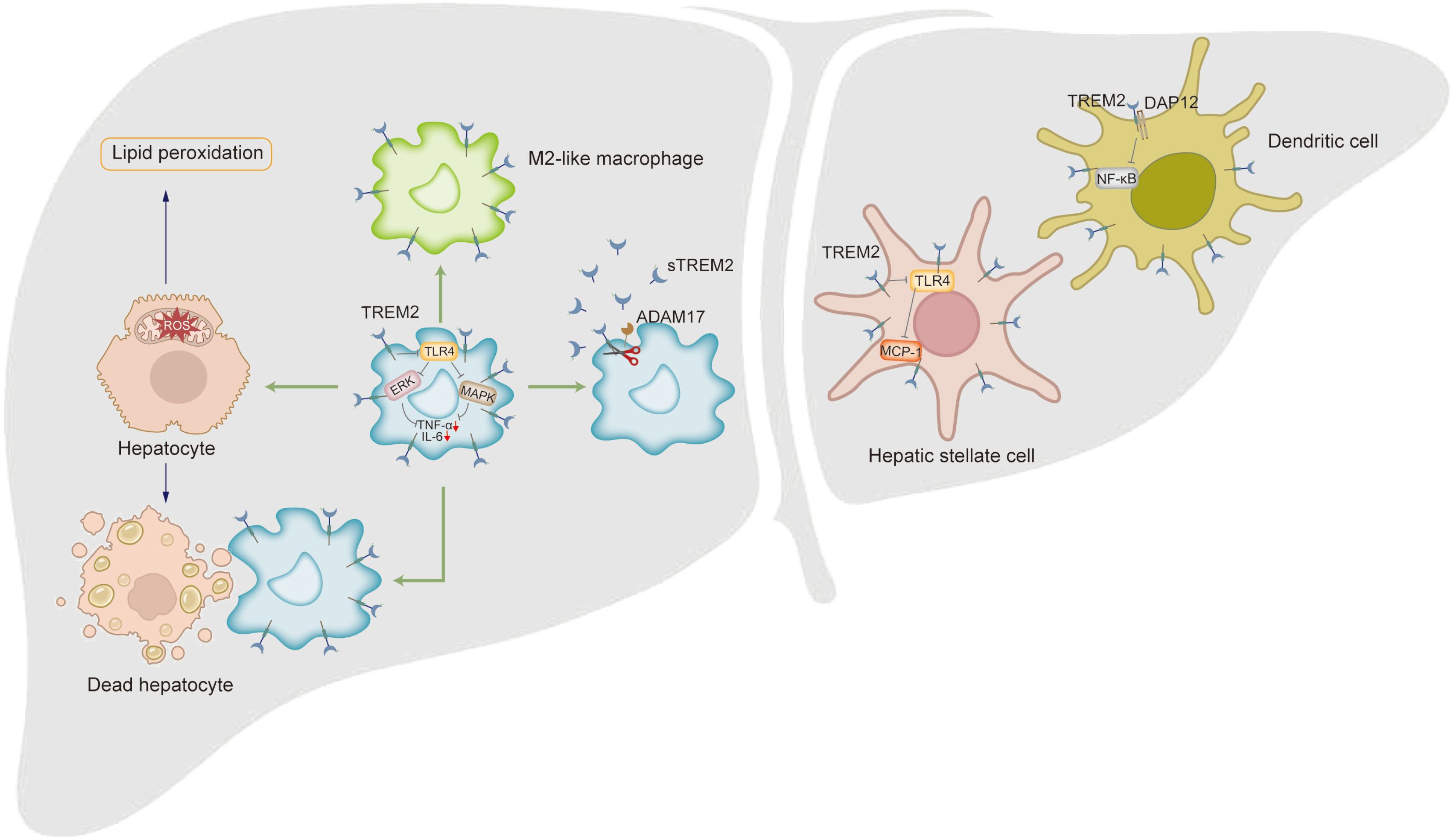Copyright
©The Author(s) 2025.
World J Hepatol. Feb 27, 2025; 17(2): 102328
Published online Feb 27, 2025. doi: 10.4254/wjh.v17.i2.102328
Published online Feb 27, 2025. doi: 10.4254/wjh.v17.i2.102328
Figure 3 Regulatory role of triggering receptor expressed on myeloid cells 2 in non-alcoholic fatty liver disease-related inflammatory injury.
The liver macrophages expressing Triggering receptor expressed on myeloid cells 2 (TREM2) exhibit inhibition of the pro-inflammatory response caused by toll like receptor (TLR) 4-driven extracellular regulating kinase and mitogen-activated protein kinase phosphorylation activation, as well as reactive oxygen species-mediated lipid peroxidation and hepatocyte death. High expression of TREM2 ensures that macrophages can effectively clear apoptotic hepatocytes through efferocytosis in a timely manner, thereby inhibiting the transformation of non-alcoholic fatty liver disease into non-alcoholic steatohepatitis (NASH). TREM2 can induce macrophage differentiation towards M2 macrophages and inhibit inflammatory response. Tumor necrosis factor and interleukin-1β can induce a disintegrin and metalloproteinase 17 to cleave TREM2, leading to an increase in soluble TREM2 levels and aggravation of inflammation in NASH. TREM2 can also inhibit the production of TLR4-dependent monocyte chemoattractant protein-1 in hepatic stellate cells. The TREM2 receptor expressed in dendritic cells inhibits nuclear factor-kappa B through binding with DNAX-activating proteins 12, thereby alleviating liver inflammation. ADAM: A disintegrin and metalloproteinase; DAP: DNAX-activating proteins; STREM2: Soluble triggering receptor expressed on myeloid cells 2; TREM: Triggering receptor expressed on myeloid cells 2.
- Citation: Zhang LH, Liu ST, Zhao Q, Liu XY, Liu T, Zhang Q, Liu MH, Zhao WX. Role of triggering receptor expressed on myeloid cells 2 in the pathogenesis of non-alcoholic fatty liver disease. World J Hepatol 2025; 17(2): 102328
- URL: https://www.wjgnet.com/1948-5182/full/v17/i2/102328.htm
- DOI: https://dx.doi.org/10.4254/wjh.v17.i2.102328









